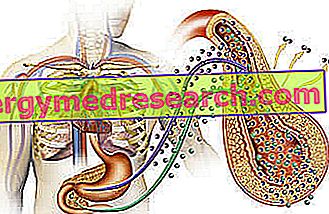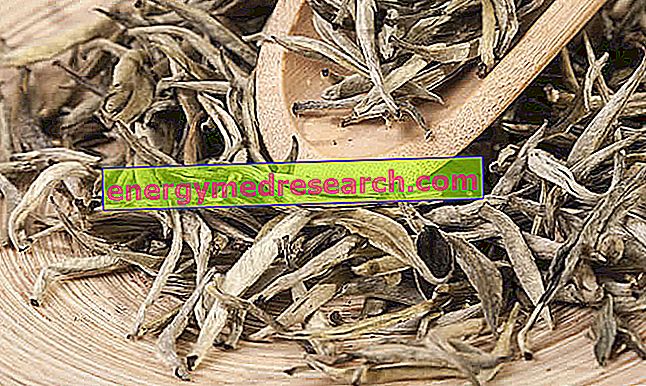See also: Polycystic ovary, insulin resistance and nutrition
Generality
We talk about insulin resistance when the body's cells decrease their sensitivity to the action of insulin; it follows that the release of the hormone, in known doses, produces a lower biological effect than expected.

In response to insulin resistance, the body puts in place a compensatory mechanism based on the increased release of insulin; in these cases we speak of hyperinsulinemia, that is of high levels of the hormone in the blood. If in the initial stages this compensation is able to keep the glycaemia at normal levels (euglycemia), in an advanced stage the pancreatic cells responsible for the production of insulin fail to adapt its synthesis; the result is an increase in post-prandial blood glucose.
Finally, in the overt phase, the further reduction in the plasma concentration of insulin - due to the progressive depletion of pancreatic beta-cells - determines the appearance of hyperglycaemia, even in the fasted state.
It is therefore not surprising that insulin resistance is often the antechamber of diabetes .
To understand the biological reasons behind this negative evolution it is necessary to have sufficient knowledge of the regulatory mechanisms of blood sugar and the hormones that participate in it. Briefly, insulin resistance determines:
- an increase in triglyceride hydrolysis at the level of adipose tissue, with an increase in fatty acids in the plasma;
- a decrease in glucose uptake in the muscle, with a consequent decrease in glycogen deposits;
- a greater hepatic synthesis of glucose in response to the increased concentration of fatty acids in the blood and the loss of the processes that inhibit it; consequently there is an increase in fasting glycemic levels.
- compensatory hyperinsulinemia is thought to render the beta-cell incapable of activating all those molecular mechanisms necessary for its proper functioning and normal survival. The decreased functionality of pancreatic cells responsible for insulin synthesis opens the door to type II diabetes mellitus.
Muscle tissue is the main site of peripheral insulin resistance; however during physical activity this tissue loses its dependence on insulin and glucose succeeds in entering the muscle cells even in the presence of particularly low insulin levels.
Causes
The causes of insulin resistance are numerous.
From the biological point of view the problem can be located at the pre-receptorial, receptorial or post-receptorial level, including the various possible overlaps. Insulin resistance can be caused by hormonal factors; it is possible, for example, a qualitative defect in the production of insulin, as well as an excessive synthesis of hormones with counter-insular effects. This class of substances includes all those hormones, such as adrenaline, cortisol and glucagon, capable of antagonizing the action of insulin, to the point of determining insulin resistance when present in excess (as typically occurs in Cushing's syndrome).
The ways in which these hormones oppose insulin are the most disparate: for example, they can act on insulin receptors reducing their number (this is the case of GH), or on the signal transduction grafted by the insulin-receptor bond (necessary to regulate the cellular response). The latter biological action consists in the redistribution of GLUT4 * glucose transporters from the intracellular compartment to the plasma membrane; all this allows to increase the supply of glucose. Even the exogenous contribution of these hormones (eg cortisone or growth hormone) can lead to insulin resistance. There may also be genetic causes caused by insulin receptor mutations. In most cases, however, the causes of insulin resistance cannot be clearly determined.
In addition to the inevitable hereditary component, in most cases insulin resistance affects individuals affected by diseases and conditions such as hypertension, obesity (in particular the android or abdominal), pregnancy, steatosis, metabolic syndrome, use of anabolic steroids, atherosclerosis, polycystic ovary syndrome, hyperandrogenism and dyslipidemia (high values of tiglycerides and LDL cholesterol associated with a reduced amount of HDL cholesterol). These conditions, associated with the inevitable genetic component, also represent possible causes / consequences of insulin resistance and are important for its diagnosis.
Diagnosis
Apart from specific, very costly and limited research examinations, the plasma concentrations of fasting glucose and insulin are evaluated in clinical practice.
Sometimes the classic glycemic curve is also used, which in the presence of insulin resistance shows a relatively normal course, except that it presents - after several hours - a rapid decline in blood sugar (due to hyperinsulinemia).
Treatment
The most effective treatment for insulin resistance is given by the practice of regular physical activity, associated with weight loss and the adoption of a diet based on caloric moderation and consumption of low glycemic index foods. The aids able to reduce or slow the intestinal absorption of sugars (acarbose and fiber supplements such as glucomannan and psyllium) are also useful. Some drugs used in the treatment of diabetes, such as metformin, have also proved effective in treating insulin resistance; however it is very important to intervene first of all on the diet and on the level of physical activity, resorting to pharmacological therapy only when the modifications of the lifestyle are not enough.



